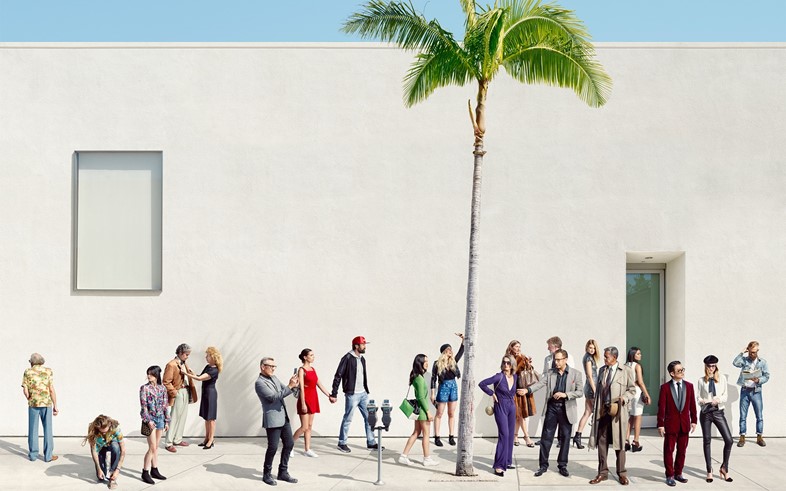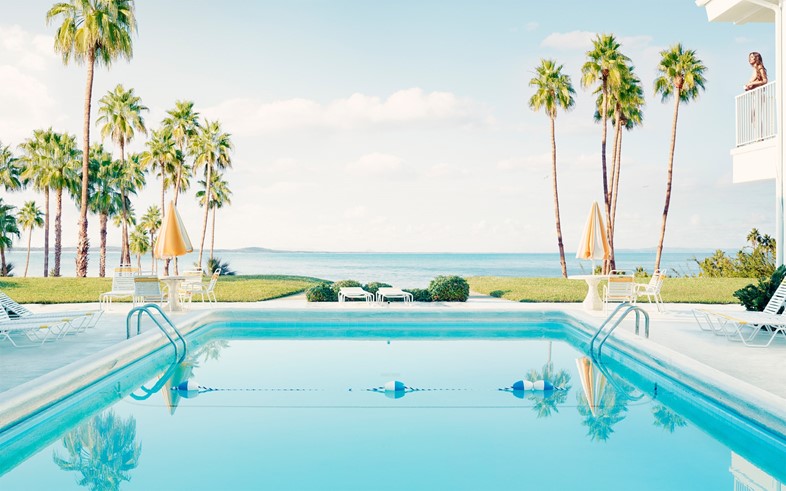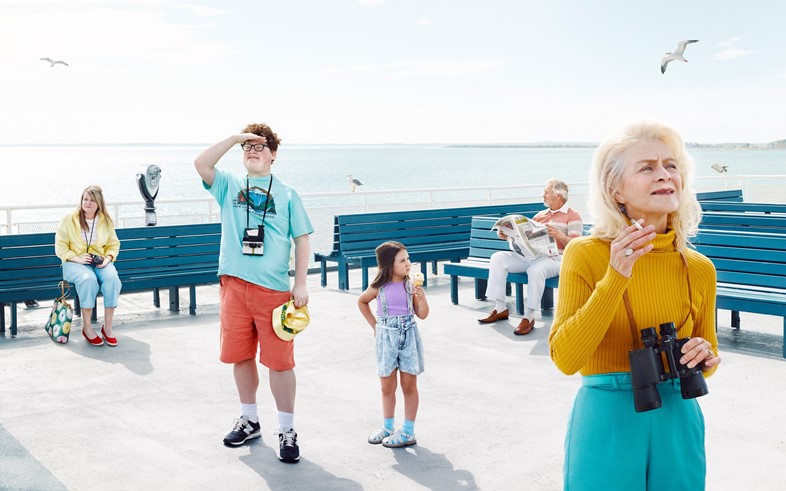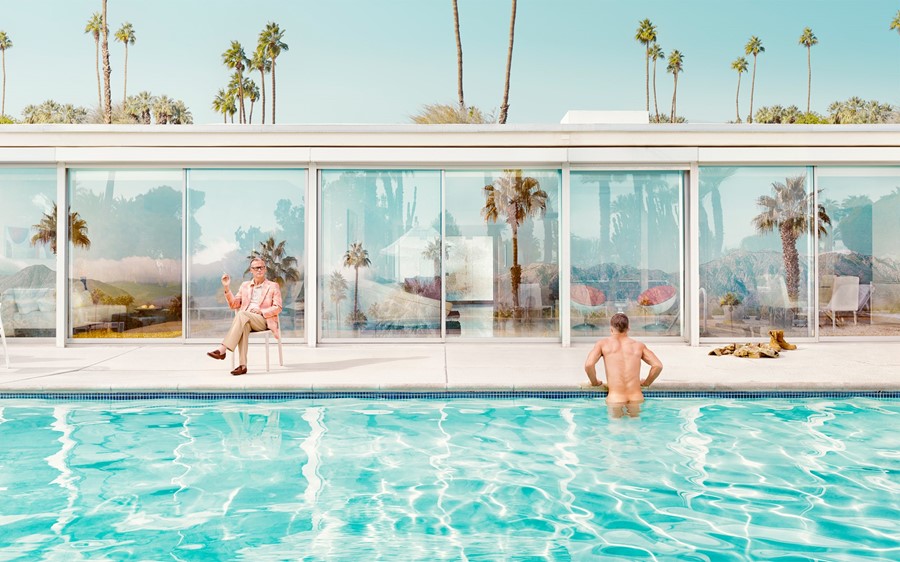They may resemble stills from a Hollywood film, but Dean West's compelling photographs are in fact painstakingly reassembled from memory. He tells AnOther more about the stories that inspired them
“Do you want to know the full story?” Dean West asks me over the phone one Wednesday afternoon. As propositions go it sounds like an invitation to hear a slice of salacious gossip, but in fact the photographer is referring to the tale behind an image called Palm Springs II. The photograph – painstakingly staged to resemble an action shot, or a film still from a Hollywood blockbuster – was made as part of an ongoing series in which West recreates moments, either from stories recounted to him by friends, or from his own memories, blurring the boundaries of fact and fiction to gloriously theatrical effect.
“The project first started in 2015,” West explains. “It draws inspiration from how we see and record memories, starting with a foundational moment and then, upon re-accessing the memories, re-imagining and constructing them. Over time these memories end up getting further and further from the truth, as the mind inputs information into the scene. But The Painted Photograph draws inspiration from a Hollywood stylised aesthetic, and how it can draw in an audience using the power of aesthetic force.”

He first heard the story which inspired Palm Springs II – a sexually charged, Hockney-esque scene of a naked and muscular bronzed man lifting himself out of a turquoise swimming pool under a watchful older gentleman’s admiring gaze – while staying with a friend in Palm Springs. “I was at a karaoke bar with a friend, and we were just drinking,” he goes on. “All of a sudden a group of young military boys came into the bar, and my friend, who is a middle-aged gay man, became really close with one of the young gentlemen. This young gentleman who had a girl on his shoulder: he said he was 19 years old, and had just done some time in Afghanistan, and basically he had the weekend off and was looking to hook up with this girl he was with.
“As the night progressed my friend Sean became more and more enveloped by this kid and, intrigued, I pulled him aside. I said, ‘Sean, you are falling over this young kid. You know, what are you doing? Clearly he is with that girl!’ And he was like, ‘didn't you know, he gave me his number?’ I was like, ‘no he didn’t!’ He went on to tell me then that Palm Springs is about 45 minutes away from a large military base in the United States called 29 Palms. He told me about how these kids, these young military guys, they go away and they do their service and they are kept out of civilisation for so long, and then they have these very small windows when they come to the local town to party. Basically, it happens all the time – these young guys get to Palm Springs, they are just looking for affection. Whilst he is telling me the story, I am in shock, and because I was in Palm Springs, and kind of challenging the whole nostalgia of the mid-century architecture with this story. This is the image that was in my mind while he was telling me that narrative – this is how my imagination was constructing that scene.”

West’s is an usual but utterly compelling method for constructing a photograph. The results are strangely cinematic – like day-to-day situations that have had the animation sucked out of them; oneiric, fantastical set-ups that echo with old school americana. Take the image of a woman standing naked on a motel balcony, drinking coffee as she looks out over the horizon, for example. “That’s where my dad and I used to go on holiday as a kid,” he explains. “We would go to this place in Australia called the Gold Coast, and it had a lot of these kind of mid-century, 70s hotels. I remember seeing this scene as a 12-year-old boy – and I was in Florida recently and saw this motel that kind of reminded me of something. The next thing you know, the image is a reality.”
The process behind creating these shots is long and time-consuming, sometimes taking up to 12 months to produce a single image, and West chooses to work with actors, who will get into the mind of the characters they are playing, rather than models. “Actors tend to have a little bit more realism in their look and feel,” he says. “They have the ability to try and channel certain emotions as a pose, rather than just looking beautiful, that is really important.” He also works by layering up elements from different scenes to create the perfect image. “To recreate the scene of the girl on the balcony, that was like seven days of driving to find the one space that felt as close to that memory as possible.” It does require a certain degree of obsession, he concedes – but as memories build in layers ove rtime and retellings, so too do West’s shots. And they’re all the more beguiling for it.

